Composition Forum 50, Fall 2022
http://compositionforum.com/issue/50/
Rethinking the Rhet Comp PhD: An Interdisciplinary and Rhetoric-Centered Approach to Graduate Studies at Clemson University
In 2014, The Chronicle of Higher Education published an article discussing the shrinking job prospects for English doctoral students. The author, Marc Bousquet, recommends that programs struggling to place students in fulfilling jobs follow the direction of graduate programs that have avoided some of the difficulties faced by universities that lag behind in adapting to changes in technology, disciplinarity, and the realities of the academic job market. Bousquet encourages these programs to focus on rhetoric, composition, technology, and interdisciplinarity, which remain in-demand within most contemporary universities. He notes:
Comp-rhet scholarship and teaching have revived English studies, not diminished it. Programs featuring advanced writing and digital-publication curricula have soaring enrollments, often rescuing undergraduate and graduate English programs from extinction. ...[In] South Carolina, Clemson University has an active, interdisciplinary, but English-studies-based graduate program in rhetoric, communication, and information design. Its job-placement record? 100 percent.
Bousquet’s timely decree coalesces well with a number of similar calls for changes in composition and rhetoric’s disciplinary priorities that encourage multimodality, interdisciplinarity, and digital technologies so as to reimagine what the discipline can be for a rapidly changing world. For instance, Kathleen Blake Yancey, in her 2009 report to the National Council of Teachers of English, also articulates the imperative to focus on rhetoric and composition and on innovating composing practices (given tectonic shifts in technology):
This is a call to action, a call to research and articulate new composition, a call to help our students compose often, compose well, and through these composings, become the citizen writers of our country, the citizen writers of our world, and the writers of our future. (1)
A wave of composition scholarship enacts such a call by embracing multimodality. As Richard J. Selfe and Cynthia L. Selfe note, “students learn best when they read and compose in multiple ways, when they use multimodalities to identify new and effective forms of literacy (podcasts, digital video, audio essays)” (84). Similarly, Jody Shipka contends in Toward a Composition Made Whole that writing is always a series of choices about modality, and that writing processes, by their nature, are multimodal in that they ask writers to examine their place within historical and social conversations (2011). Finally, Pamela Takayoshi and Cynthia Selfe argue that communication is becoming increasingly cross-cultural, but that print, text-based writing may not be the most appropriate or effective form of communication in particular contexts (2007). Each of these contributions speaks directly or indirectly to the role digital technologies play in shaping new approaches to composition.
This leads to some important questions: What will future rhetoric, composition, and communication graduate programs value, prioritize, and pursue? How will graduate studies in these disciplines evolve over coming decades in response to “new composition”? One program that explores such questions is the Rhetorics, Communication, and Information Design (RCID) PhD program at Clemson University. Since its creation in 2005, the RCID program has prepared doctoral students for innovative research, teaching, professional careers, and creative work. By prioritizing transdisciplinary research, committing to rhetoric as a connection builder, and recruiting diverse student populations through both residential and online options, this program continually updates what graduate study in rhetoric, composition, communication, and information design can do in the world. Positioning rhetoric as a nucleus of diverse, evolving, and innovative programmatic research pursuits, the RCID program (with its Aristotelian creed of knowing, doing, and making) reimagines what rhetoric, composition, and communication programs can be, do, and make. As such, closely examining the program offers stakeholders in composition studies a lens into the successes, challenges, affordances, and future opportunities that an interdisciplinary, rhetoric-centered PhD can present. In many ways, the RCID program at Clemson responds to some of the challenges for an evolving academy that Bousquet calls attention to above, striving to train graduate students for an academic environment that values transdisciplinarity, digital creation, and multimodality more than it ever has before.
There are countless examples in scholarship of how attention to multimodal composition and digital rhetoric in the classroom enhances student experience and engagement while also preparing them for a world of ubiquitous technology use. We argue that one way to train for and encourage this type of adaptation, both in graduate students and future college instructors, is through an interdisciplinary PhD program. This program profile showcases the value, as well as some of the challenges, of interdisciplinary graduate degrees for the discipline of rhetoric and composition. We contend that interdisciplinary training, like that offered in Clemson’s Rhetorics, Communication and Information Design PhD (RCID) program, prepares students to respond to both a narrowing job market and an increasingly diverse student population with broad backgrounds. RCID works to answer the call of composition scholars to broaden our definition of composing beyond hands on laptops and pen and paper to account for the needs of more diverse populations of students.
Program History and Evolution
Founded in 2005, Clemson’s RCID program was born out of a confluence of scholars who wanted to offer students a program where they could receive both practical and theoretical training for a rapidly evolving world. Rhetoric seemed a perfect home for this kind of work because, according to former program director Dr. Cynthia Haynes, “rhetoric is a meta-discipline, it informs all other disciplines, even if they don’t know it” (Personal Interview, February 2022). The program currently does not reside within a department and, instead, pulls faculty from different disciplines within the College of Architecture, Arts, and Humanities at Clemson, as well as from other departments across the university. From its inception, the program has taken a broad and proactive approach to interdisciplinarity. The creators wanted not only English and rhetoric to be featured pillars of the program, but art, architecture, communication, data sciences, critical theory, history, philosophy, and other disciplines that come together to inform transdisciplinary responses to important questions.
One of the ways that RCID has demonstrated its commitment to composition is through assistantships and funding for graduate students, allowing their research to inform their teaching and their teaching to inform their research. Most residential students currently teach the general education first-year composition and rhetoric course, and additionally have opportunities to teach a wide array of advanced composition courses as they advance within the program. Dr. Haynes, who served also as the director of the first-year composition program, states that this relationship between the interdisciplinarity of the program and composition was intentional: “They are meant to fuel each other. They need to fuel each other.” The relationship between interdisciplinarity and composition has always been at the heart of the RCID program. The cohesive vision of the program and its adaptability allow for a variety of pedagogies to emerge, ones that suit the needs of a continually changing demographic of students.
In RCID graduate coursework, there is a concerted drive to tailor seminars to student interests as well as to make connections between seminar topics and student interests that result in a deliverable that helps the student’s rhetorical education as well as their professional career. For instance, a student enrolled in David Blakesley’s Rhetorics of Cinema RCID seminar who maintained a scholarly interest in multimodal composition designed a social justice-themed documentary filmmaking project for their composition course, combining the seminar’s focus with their scholarly interests in generative ways, including through scholarly publication (see Richter 2021). Though the resulting project was not firmly and unambiguously situated within the purview of “rhetorics of cinema,” the project engaged student interests in multimodality, composition pedagogy, place studies, public memory, geography, communication, and emerging technologies, resulting in a transdisciplinary pedagogy and published article grounded in RCID’s drive to craft unanticipated connections. Crafting connections across disciplines and interests is central to what RCID strives to encourage students to do across their research, teaching, and service work, representing a core programmatic goal of interdisciplinarity that is infused throughout most students’ graduate school experiences.
The history of RCID’s interdisciplinary program demonstrates its sustained commitment to developing innovative thinkers and teachers. The adaptability and flexibility afforded by an interdisciplinary program allows for quick responses, both to changing imperatives and in the composition classroom. Writing programs, including programs that focus on first-year writing as well as writing across the curriculum, often benefit from being similarly adaptable and flexible, taking into account student needs and the demands of a 21st century education.
Responding to a Broadening Imperative
The study of rhetoric and composition oftentimes evolves toward discussions of how the two are inextricably linked, both historically and in practice. Considering this relationship, composition studies benefit from interdisciplinary programs of study that value innovative thought and composing in a variety of formats. RCID stakeholders accomplish this through the structure of the program, through foregrounding multimodal composition, and through exploring the connection building possible within the study of rhetoric.
Structure
One way that a PhD program can support transdisciplinary work is through admitting students with diverse backgrounds and interests, as well as a structure that allows for creative work. The structure of the RCID program also reflects the flexibility and interdisciplinary nature of its founding vision. There are currently 23 residential students whose academic interests range from digital storytelling, trauma theory and domestic violence, religion on YouTube, filmmaking, data visualization and composition, rhetorics of health and medicine, and even death practices and their connections to public memory. The wide range of specializations means that no two students' backgrounds, projects, or experiences look the same while in the program. This is considered one of RCID’s strengths.
What truly sets RCID apart from other programs, though, is its online PhD program. Though the RCID program initially consisted of exclusively residential students, the program expanded to include online students in 2013. This move not only addressed a growing budgetary need for self-sustainability, but it also made sense pedagogically. At its core, RCID bridges gaps. Offering an online option for students not only enhances opportunities of graduate study for place-bound students, but it also broadens the type of students who enter the program. Online students follow the same course path as residential students and have the option to take coursework part time instead of the traditional full course load. True to the program’s “conceptual emphasis on knowing, doing, and making,” online students could be (and are) professionals working, often full time, in a variety of relevant fields both inside and outside academia. Current and former online students come from backgrounds such as filmmaking, social media, education administration, law, advertising, military intelligence, journalism, and information technology, a diversity of backgrounds that adds depth and perspective to the program. This diversity of backgrounds also leads to a variety of research interests. Students span disciplinary boundaries in their interests and follow diverse trajectories in their careers, fostering a culture of collaboration and a level of synergy that benefits both online and residential students. Additionally, the distributed nature of the program helps students to avoid the pitfalls of academic siloing. Transdisciplinary engagement in PhD programs like RCID is essential to the future of composition studies.
RCID courses are offered in a hybrid format, with the online students connected to physical classroom spaces using virtual meeting software. The notion of hybrid courses in a PhD program was novel in 2013, although at least one completely online PhD program in rhetoric and composition existed prior to then. However, when the COVID-19 pandemic forced all classes online in 2020, RCID faculty and students were uniquely prepared to meet the demands of the virtual classroom setting. Admission to the program is increasingly competitive for online students as this mode of course delivery gains popularity. For the incoming class for Fall 2022, about 65% of the total applicants to the RCID program have applied for the online pathway.
What seemed experimental in 2013 is now transforming the conventions of graduate education.
Multimodal Composition
In addition to the structural elements of the program that encourage a diversity of student backgrounds and interests, multimodal composition as a pathway toward interdisciplinary research and scholarship is foundational to each step of the program. According to Elizabeth Clark, a (digital) multimodal rhetoric pedagogy develops students' literacy skills and practices in new media. As Brandi Dieterle and Stephanie Vie posit, this “might include more fully embracing concepts of new media and multimodal composing so that students are not composing webtexts that largely follow the methods of writing in print essays” (286). The RCID program most concretely actualizes its interdisciplinary and multimodal programmatic values in the work that its students create in their coursework as well as in their exam and dissertation work.
For example, in the seminar on Information Technologies taught by RCID professor Jan Holmevik, students use the Adobe Creative Suite to produce digital videos, podcasts, photomontages, websites, as well as ebook compositions, all informed by theories of digital rhetoric and multimodal composition. In this required seminar that most students enroll in during their first semester in RCID, students create either a YouTube video or some similar creative artifact for each week of the course, producing 15 artifacts in total (see Fig. 1-Fig. 4). Each week, students read an assigned book relating to critical theory and digital culture, then receive a single word or phrase serving as a heuristic (or idea-generating mechanism) for the week (see Stephens and Holmevik 2016). The student then takes the week’s assigned text and assigned heuristic and creates a video or other artifact based on how they are inspired by their convergence and based on associations, connections, and synergies.
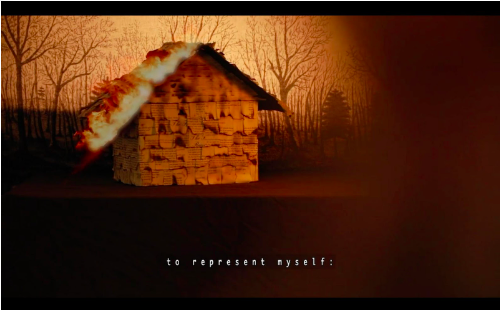
Figure 1. From Doll/House by Rebecca Rea Ross. Image produced and provided by Rebecca Rea Ross.
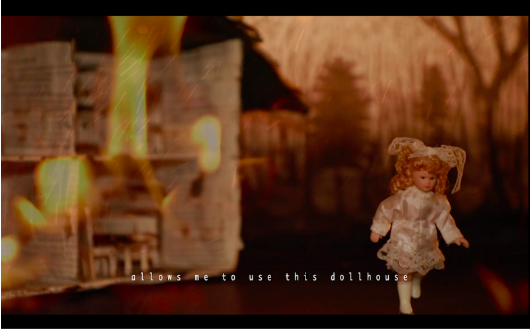
Figure 2. From Doll/House by Rebecca Rea Ross. Image produced and provided by Rebecca Rea Ross.

Figure 3. From Raison D’etre by Galen Faison. Image produced and provided by Galen Faison.
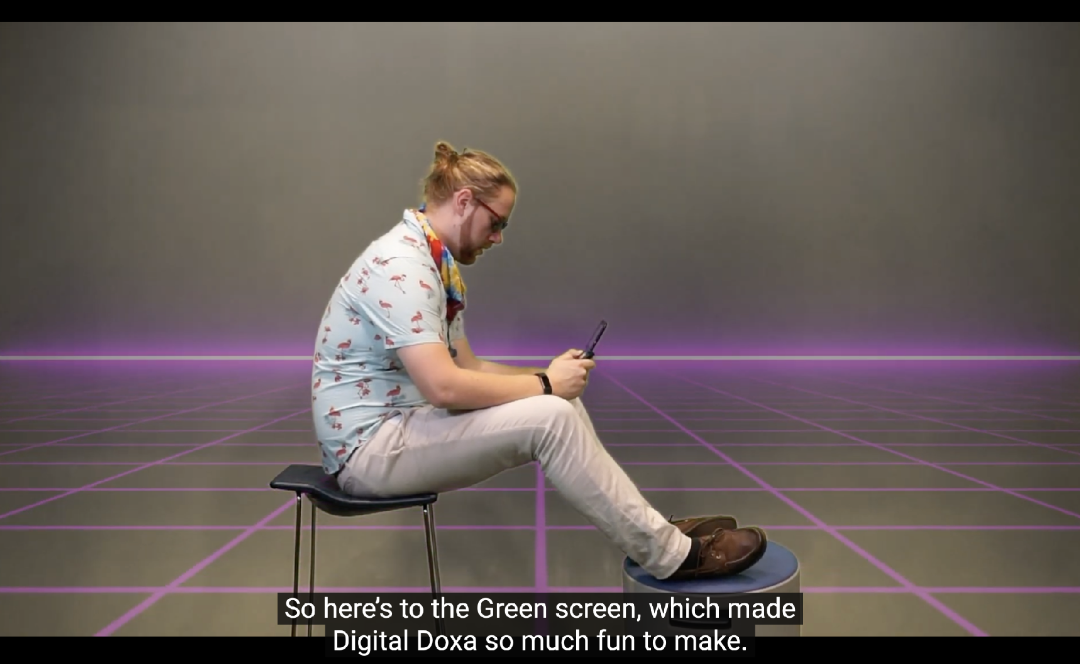
Figure 4. From GreenScreening the Possible by Jacob Richter. Image produced and provided by Jacob Richter. https://www.youtube.com/watch?v=xrIMm6hdP7Y&ab_channel=JacobRichter
Such inspiration primarily emerges from immersive processes of experimentation and play with digital technologies, processes shaped by and tailored to the individual rhetor engaged in composing. Justin Hodsgon, Associate Professor of Digital Rhetoric in the English Department at Indiana University and the first graduate of the RCID program in 2009, emphasizes the bond play shares with affect for Holmevik. For Holmevik (and for Hodsgon), affect is experiential and illuminating for the designer/composer, and the affective is rooted in and shapes the deeply personalized acts and artifacts that emerge from play: “How one plays and what one plays with—particularly in playing with mediating technologies as a way of being—are not universal conditions; rather, play is tied to individual humans (in specific cultures), individual choices, and individual attunements” (pp. 206-207). Such personalized engagements with multimodal composing in 8050 cultivate the individual trajectories of students. This seminar requires students to produce a digital portfolio of research artifacts as a basis for building a portfolio. And the work that RCID students produce in this Information Technologies seminar helps to orient their creative work across the duration of the program: many students' seminar projects, dissertations, published work, and professional development are influenced by these early forays into the creativity and digital media production skills nurtured by the first-semester Information Technologies course.
Multimodality particularly manifests through the comprehensive exams. In addition to the three written exams, students have a fourth, public, and multimodal exam that encourages students to think beyond composition as primarily alphabetic text-based writing. This takes the form of videos, photography, game design, as well as more conventional models of presentation, like PowerPoints, Adobe Spark presentations, and Google Slides. Requiring students to think through the multimodal aspect of research is intended to not only enhance engagement with the exam material, but prepare students to engage their composition classrooms with the affordances and challenges of multimodal composition.
Dissertations produced as part of the RCID PhD program not only engage a multitude of disciplines, but also feature faculty members from a multitude of departments serving on student dissertation committees, including departments at Clemson such as English, Communication, Philosophy and Religion, Education, Art, Architecture, and History, to name just a few. In the RCID program, student dissertation committees may not have more than two faculty (of four total) from any one department, helping to infuse innovative and transdisciplinary connections throughout each project. Students producing dissertations in the RCID program also engage in multiple modes of composition, including dissertating in media that engage visual, sonic, video, geographical, and gaming forms. Students graduating from the RCID program have produced dissertations incorporating hip hop music (see Carson 2017), comics/graphic novels (see Helms 2010), digital historical tours (see O’Brien 2019), Minecraft designs (see Stuart 2019), and maps (see Quigley 2018 and Ozyesilpinar 2018), in addition to more traditional modes engaging writing, qualitative and quantitative research, cultural research methods, and humanistic inquiry.
The RCID program not only prioritizes transdisciplinary research, but also values creativity in the delivery of this research, particularly in student dissertations. In founding the program, Victor Vitanza envisioned an incubator for non-traditional dissertations, which would include some form of a creative artifact in addition to the sanctioned written format. Students have used this flexibility to expand upon the norms of dissertation research, completing projects that transgress the boundaries of composition and highlight the value of transdisciplinary research. It is important to note that these students, who primarily completed these projects as supplements to the traditional written dissertation, all now hold tenure-track positions at universities across the world. RCID’s programmatic prioritization of multimodality, infused across coursework, exams, and the dissertation, also helps to orient its emphasis on rhetoric as a connection builder across disciplines.
Rhetoric as a Connection Builder & Transdisciplinary Study
The multidisciplinary scope of rhetoric lends itself to a wide range of connections with other disciplines. Allowing for these connections to build and flourish creates space for multimodal work in areas of a program. Coursework in the RCID program prepares students to engage deeply with subjects in the humanities and communications, and the program’s transdisciplinary approach positions rhetoric as a builder of connections among these subjects. This is reflected most clearly in the program through coursework and supplemental scholarly meetings. Students must pass through four stages of the program. During the first stage, students complete eleven seminars, both core and cognate. Specific topics often change depending upon the interests of students and professors. This process keeps the academic ground fresh and relevant for each cohort and invigorates the broader culture of the program. The core curriculum consists of Histories of Rhetorics; Visual Rhetorics; Rhetorics, Communication, and Information Technologies; Cultural Research Methods; and Empirical Research Methods. The cognate seminars, which further promote transdisciplinary education, immerse students in a variety of fields such as Information Design, Technology and Communication, History, Philosophy, Literature, Languages, Art (history and studio), Architecture, and Writing.
In both core and cognate seminars, students engage with rhetorical theory and practice as they create linkages among disciplines and produce multimodal compositions that demonstrate these linkages. Similarly to the multimodal creative production nurtured by the Information Technologies seminar discussed above, other RCID courses engage multimodality and digital creativity with imaginative approaches to communication. For instance, students in an Information Design seminar have recently engaged in data visualization in an effort to communicate to broad audiences across digital networks. Engaging with our contemporary multi- and mixed-modal reality, RCID coursework specifically includes hands-on experiences that equip students with “the knowledge and practical insights to analyze complex media data and produce persuasive data visualizations and narratives” (Holmevik, Syllabus for Rhetorics, Communication, and Information Visualization). Scholars of rhetoric and writing studies have recently advocated for data visualization as both a method and as a mode of composition. For example, Derek Mueller introduces network sense as “an epistemological capacity for discerning those patterns entangled with a broad set of forces running through and beyond the text, involving matters of semantic associations, historical orientations, locations, and relationships”... it “finds tangible coherence in complexity” (34). While Mueller is writing about making sense of rhetoric and writing studies as a discipline, his methodology underscores the exigence for data visualization as both knowledge-producing and as an essential analytical tool. Mueller notes the increasing necessity and relevance of “alternative treatments of large, complex, and unwieldy textual collections” in rhetoric and writing studies in particular and in the humanities in general. These treatments allow various forms of data to be traced and modeled visually. In addition to being an effective way to parse copious data, visualization is generative, descriptive, and dynamic.
Desiree Dighton similarly articulates the importance of scholars of rhetoric and writing studies to engage with digital technologies and large sets of data, asserting that “gaining experience with data analysis and visualization technologies will allow us to push against their affordances and perhaps contribute insight into the ways in which future tools might be designed in more just and rhetorically informed ways” (Feminist Critiques). In other words, engaging with data visualization as both a composition process and a research method encourages scholars—and students—to interrogate the functions of digital tools and multimodal elements of display. The skills and processes of data visualization encourages students to think beyond composition, fostering connections between disciplines.
In the RCID program, students utilize data visualization in courses that are dedicated to practical skills as well as through elective seminar projects. In an Information Design seminar, RCID students practice methods of social media forensics and data analytics, producing data visualizations using software like Tableau to analyze and display complex data (see Figure 5). Students also practice data visualization in elective coursework, such as in Figures 6 and 7, in which a student used data visualization to analyze a key text. Additionally, RCID students have utilized data visualizations in publications. Figure 8 shows one of several visualizations produced by RCID students in a study of QAnon posts.

Figure 5. A tweet analysis produced in Tableau using data collected via NodeXL. Visualization produced and provided by Haley Swartz.
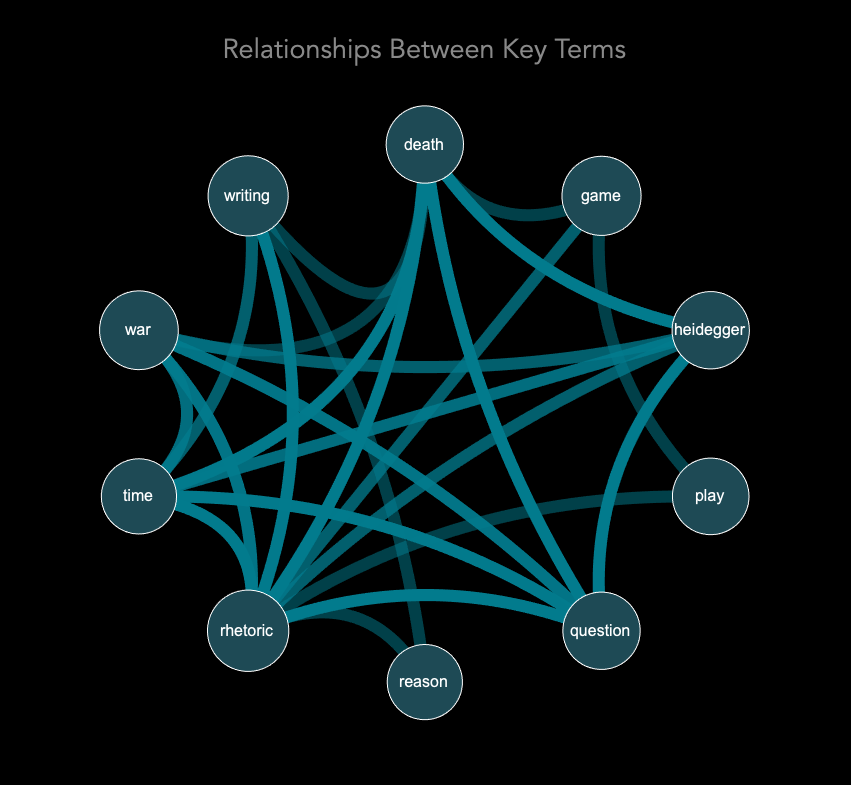
Figure 6. Relationship between key terms in Homesick Phonebook by Cynthia Haynes. Image produced and provided by Matthew Chambers.
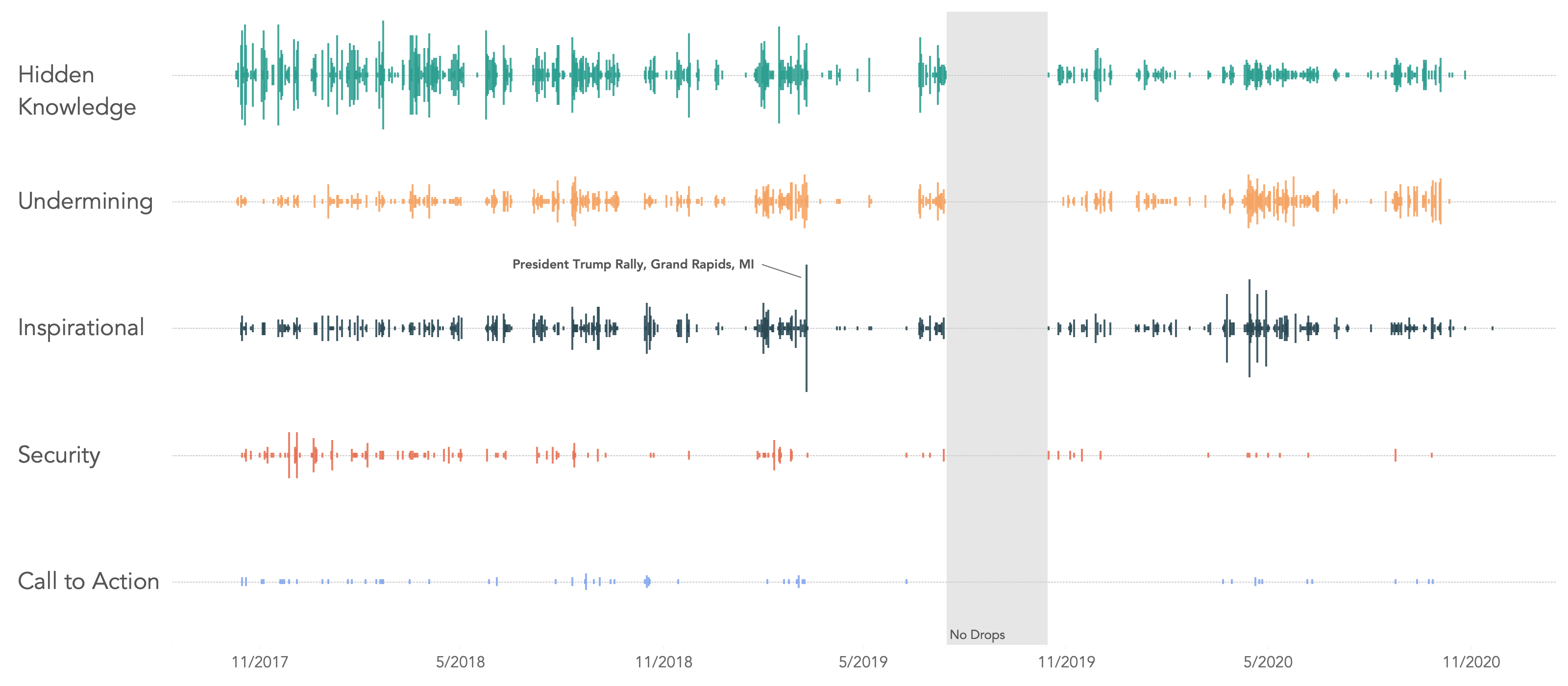
Figure 7. Visualizing word usage in Homesick Phonebook by Cynthia Haynes. Image produced and provided by Matthew Chambers.
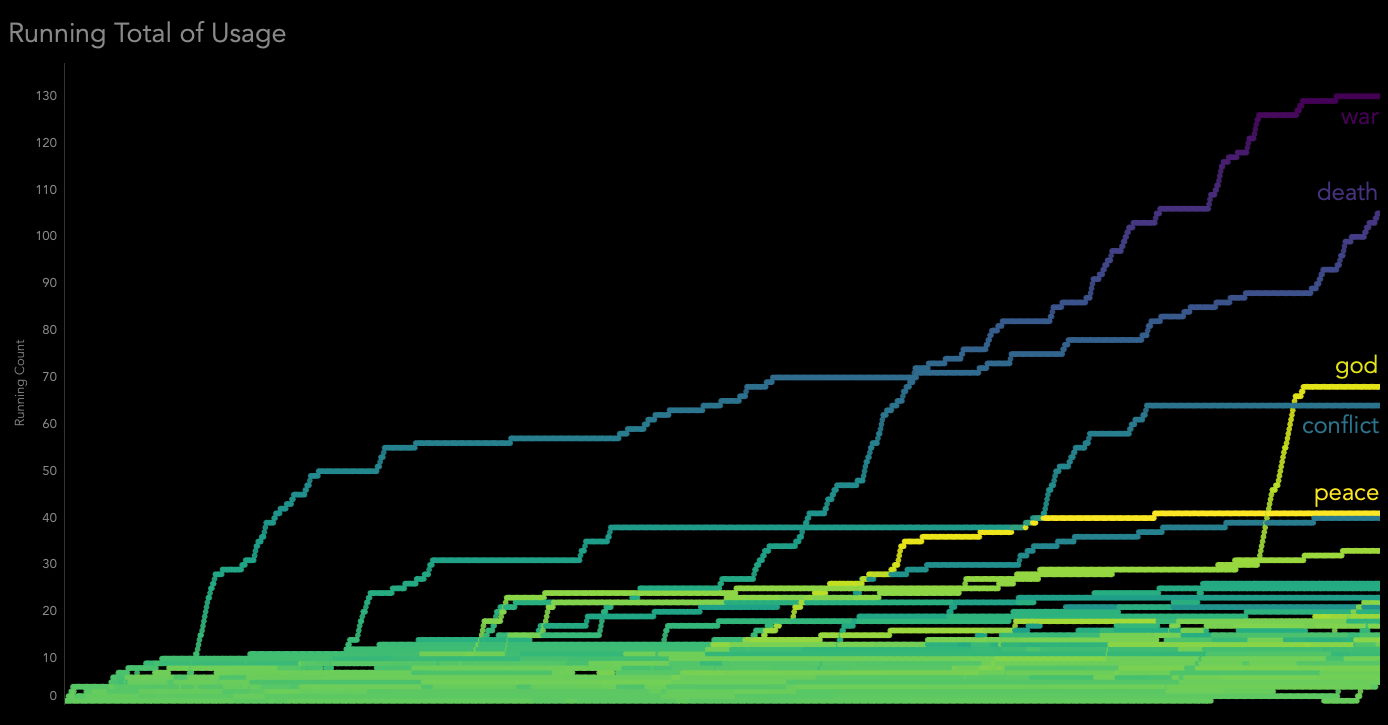
Figure 8. Visualization of topics included in “Q” posts, included in Mapping the Messenger: Exploring the Disinformation of QAnon by Darren Linvill, Matthew Chambers, Jennifer Duck, and Steven Sheffield.
RCID culture encourages students to foreground research questions and problems and to allow answers to be drawn and adapted from a multitude of disciplines that can contribute toward providing generative syntheses that one discipline alone wouldn't be capable of providing. For instance, a student might begin a dissertation project with a primary research question of How can data visualization be used to advance causes of social justice? or How can rhetorics of health and medicine influence how doctor’s offices design documents for patients to fill out?. The students can then foreground their research question and “gap” of inquiry, drawing on disciplines of rhetoric and composition, literature, anthropology, medicine, computer science, art, communication, medical humanities, or any others that are relevant to the research question.
By foregrounding a research area and topic of inquiry, and then drawing from a multitude of fields and disciplines to generate an innovative answer synthesizing insights from no-longer-disparate areas, the RCID student is able to both ground their work in the metadiscipline of rhetoric but also to draw on a wide array of voices to generate an original argument. Foregrounding transdisciplinarity as a programmatic priority has been key to RCID’s successes and has allowed the program to not only differentiate itself from more “situated” rhetoric and composition programs, but also to position students to make innovative contributions to professional knowledge, expand what a graduate school experience can entail, and succeed in marketing themselves on professional and academic job markets.
Beyond coursework and research, weekly lectures and informal research seminars provide additional connections and experiences across disciplines All RCID students are expected to attend theseColloquia led by faculty facilitators. The RCID handbook calls these discussions integral to “the life of the RCID program” because they support “scholarly communities within RCID in the bringing together of disciplinary/interdisciplinary faculty ... in order to create transdisciplinary communities” (RCID Handbook 2021-2022). Discussions range from contemporary theory on invitational rhetoric to semester-long conversations on Hannah Arendt, allowing community members to engage with a wide variety of viewpoints and scholarship. The multidisciplinary, meta-disciplinary nature of rhetoric that is supported by RCID connects students to different areas of study that enhances not only research, but their teaching. As composition classrooms are filled with students from a wide variety of academic disciplines, the ability to connect topics students care about to rhetoric and composition is paramount. In this way, interdisciplinary study equips students to be successful composition instructors.
Skills to Teach Composition in a Variety of Contexts
As composition classrooms adapt to a rapidly changing world, instructors must have the skills to meet the needs of a diverse population of students and prepare these students for composing in the 21st century. In the preface to their new, open-source textbook for composition classrooms, Try This, Jennifer Clary-Lemon, Derek Mueller, and Kate Pantelides highlight the imperative for a broad interpretation of composition:
Composing asks us to approach problems that are confusing, use tools we haven't before, invent genres for new rhetorical needs, and make texts using textual, audio, visual, and digital tools. Composition is about knowledge-making, not just writing about knowledge. (vii)
Composition, broadly constructed, invites innovation in course delivery and teaching methods, in research, and in assessment. Through the structural and programmatic vision of knowing, doing, and making across disciplinary boundaries, graduate student teaching assistants and graduates of the RCID program are uniquely prepared to teach composition in a variety of contexts using a wide range of methods. This preparedness arises from specific pedagogical coursework as well as from additional components of the program’s culture.
As a foundational goal, RCID helps students to connect their research interests and pursuits with their teaching of writing. For instance, some students with interests in Gregory Ulmer’s concept of electracy infuse it into their teaching, while others with interests in prison studies, ecocriticism, and social media find ways to incorporate their scholarly expertise into pedagogical practice at Clemson. Similarly, topics from RCID seminars can frequently be enacted directly within student's teaching practices and composition pedagogies, cementing the knowing-doing-making relationship central to RCID culture.
For instance, one student enrolled in Jordan Frith’s Mobile and Locative Media graduate seminar engaged in a series of readings related to place, GIS software, smartphones, and social justice as part of the course. The student then infused their existing interests in composition pedagogy, multimodal composition, and sound studies into their work in the seminar to design both a project for their First Year Composition students as well as a seminar project that eventually was published in an academic journal. Combining both the seminar topic and their individual scholarly interests, the student was able to blend the seminar’s discussions of place and mobile media into their teaching, resulting in a social justice audio tour project for composition students that involved articulating counternarratives of local places on the Clemson campus for consumption by public audiences (see Fig. 8). Later on, the student wrote about the pedagogical implementation of the seminar’s topics in the seminar’s major paper project, which was eventually revised with the instructor’s help and published in College Composition and Communication (see Richter, Forthcoming 2022). In many ways, the student’s seminar project in the Mobile and Locative Media class ended up combining theoretical knowledge, pedagogical implementation, and interdisciplinary experimentation in a way that not only resulted in innovative research and teaching, but also in furthering the student’s professional goals with a scholarly publication in a major disciplinary venue.
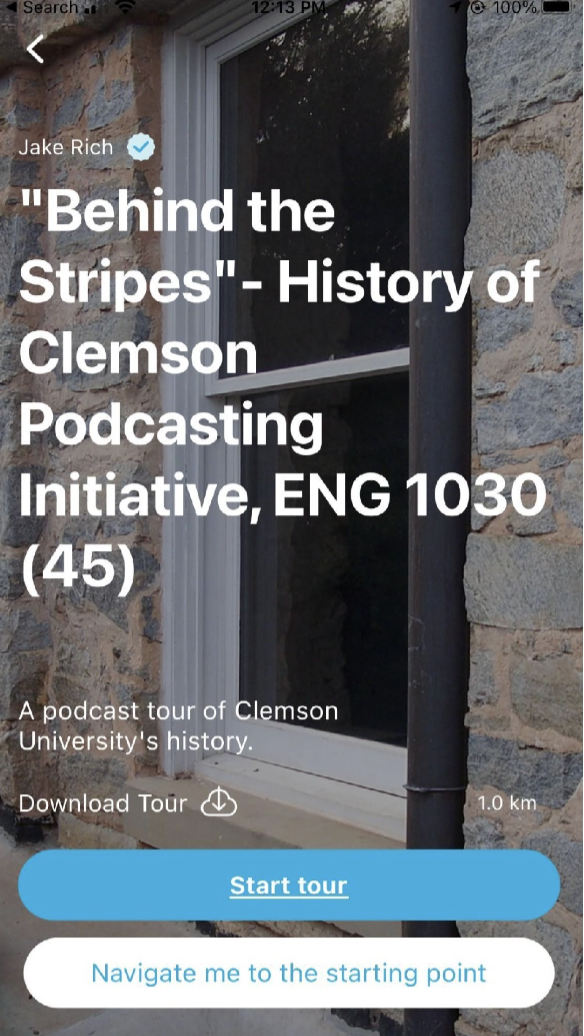
Figure 9. A screenshot of a locative media audio tour of Clemson University’s campus designed by First Year Composition students that was submitted as part of a project that an RCID student designed in a Mobile and Locative Media graduate seminar.
Additionally, several courses focus specifically on the development of pedagogical skills and approaches, such as a cognate course in feminist pedagogy. Other courses, including one focused on Pedagogy, Writing Program Administration, and Assessment, requires students to develop syllabi and teaching portfolios. All RCID courses model a broad definition of composition, requiring course deliverables in multimedia and multimodal formats. For example, in the core course, Rhetorics, Communication, and Information Technologies, students compose with the Adobe Creative Suite of tools to develop videos, podcasts, digital portfolios, and print documents. Cognate courses often require that research is adapted to a digital or visual format. For research deliverables just in the past year, students have created websites and virtual environments, used GIS mapping tools and data visualization software, and have crafted physical items such altered books/texts that manifest as dollhouses or embroidered jeans. Coursework throughout the program models methods of expanding the knowledge-making processes of composition and expanding what we expect to see and do in the composition classroom.
Conclusion: Directions and Challenges
Despite the interdisciplinary programs providing students with exceptional opportunities to engage with innovative coursework, creative research, and a variety of teaching contexts, there are challenges that are introduced alongside such advantages. The double-edged nature of an interdisciplinary program that accommodates an incredibly wide range of research interests means that students oftentimes find themselves enrolled in PhD seminars that are not directly related to their research, discipline, or field of study. In these cases, a shared foundation in rhetoric (thought here as a meta-discipline) serves as a connective tissue that bridges disparate research pursuits. As the RCID program accommodates research interests spanning across the humanities and social sciences from composition pedagogy to data visualization to Holocaust Studies and mobile & locative media studies, the connecting thread of rhetoric serves to unite disparate perspectives from the humanities and social sciences into a holistic curriculum that pursues both breadth and depth. On the academic and industry job markets, students sometimes face challenges communicating the value of a transdisciplinary degree, and have sometimes reported this translation process to be an obstacle that a student with a PhD situated directly in more traditional academic categories would be less likely to face. Students enrolled in the RCID program pursue both academic and industry-professional careers, and the holistic, comprehensive rhetoric-centered but not rhetoric-exclusive curriculum sometimes ends up prioritizing breadth over depth, with deep diving into research more commonly a feature of the comprehensive exam preparation and dissertation writing processes.
However, writing programs that wish to incorporate multimodality and interdisciplinarity can create space for most humanities driven projects. For instance, a student beginning a dissertation project on Writing Program Administration is likely to partake in, at most, one course centered around composition pedagogy during the coursework portion of their PhD program. Similarly, while a student pursuing a dissertation project centered on technical communication (TPC) is likely to find a number of associated faculty members invested in the field, coursework that directly relates to it is likely to be quite limited. In these cases, a shared foundation of rhetoric ties disparate fields, disciplines, and research agendas together, and helps students to nurture transdisciplinary and interdisciplinary mindsets that allow generative connections to be formed.
Increasingly, interdisciplinary programs are responding to the call for new and innovative approaches to composition studies. Programs like the University of Central Florida’s Text and Technology program and North Carolina State’s Communication, Rhetoric, and Digital Media program are evidence of the need for universities to adopt these types of programs to meet student needs. Despite some of the structural challenges of the interdisciplinary nature of the program, the Rhetoric, Communication, and Information Design (RCID) program at Clemson University demonstrates how a creative and broad approach to coursework, research, and teaching can empower students to engage with composition in thoughtful and innovative ways.
Works Cited
Bousquet, Marc. The Moral Panic in Literary Studies. The Chronicle of Higher Education, 7 April 2014. https://www.chronicle.com/article/the-moral-panic-in-literary-studies/
Carson, A.D. Owning My Masters: The Rhetorics of Rhymes & Revolutions. 2017. Clemson U, PhD dissertation. All Dissertations, https://tigerprints.clemson.edu/all_dissertations/1885.
Clark, Elizabeth, J. The Digital Imperative: Making the Case for 21st-century Pedagogy. Computers and Composition, vol. 27, no. 1, 2010, pp. 27-35.
Clary-Lemon, Jennifer, Derek Mueller, and Kate Pantelides. Try This: Research Methods for Writers. The WAC Clearinghouse; University Press of Colorado, 2022. https://doi.org/10.37514/PRA-B.2022.1442.
Dieterle, Brandy, and Stephanie Vie. Digital First-Year Composition: Integrating Multimodality into a Writing about Writing Approach. Journal of Global Literacies, Technologies, and Emerging Pedagogies, vol. 3, 2015, pp. 276-89.
Dighton, Desiree. Arranging a Rhetorical Feminist Methodology: The Visualization of Anti-Gentrification Rhetoric on Twitter. Kairos, vol. 25, no. 1, 2019, https://kairos.technorhetoric.net/25.1/topoi/dighton/index.html.
Haynes, Cynthia. Personal interview. 4 February 2022.
Hodgson, Justin. Post-Digital Rhetoric and the New Aesthetic. The Ohio State University Press, 2019.
Holmevik, Jan Rune. Inter/vention: Free Play in the Age of Electracy. MIT Press, 2012.
Holmevik, Jan. Syllabus for Rhetorics, Communication, and Information Technologies, Fall 2021. Clemson U.
Helms, Jason. Rhiz|comics: The Structure, Sign, and Play of Image and Text. 2010. Clemson U, PhD dissertation. All Dissertations, https://tigerprints.clemson.edu/all_dissertations/523.
Linvill, Darren, Matthew Chambers, Jennifer Duck, and Steven Sheffield. Mapping the Messenger: Exploring the Disinformation of QAnon. First Monday, Vol. 26, No. 12, 2020. https://dx.doi.org/10.5210/fm.v26i12.11745.
Mueller, Derek N. Network Sense: Methods for Visualizing a Discipline. University Press of Colorado, 2017.
O’Brien, April. Composing Counter-memories: Using MEmorial and Community Engagement to Disrupt Dominant Narratives. 2019. Clemson U, PhD dissertation. All Dissertations, https://tigerprints.clemson.edu/all_dissertations/2339.
Ozyesilpinar, Eda. Dis/Orienting Middle East: A Cart-Rhetorical Rhizomatic Mapping. 2018. Clemson U, PhD dissertation. All Dissertations, https://tigerprints.clemson.edu/all_dissertations/2117.
Quigley, Stephen Joseph. The Clemson Ghost Tour: Disrupting Rhetorical Stagnation. 2018. Clemson U, PhD dissertation. All Dissertations, https://tigerprints.clemson.edu/all_dissertations/2197.
Rhetorics, Communication, Information Design PhD Program. RCID Student Handbook 2021-2022. 2021. PDF.
Richter, Jacob D. Cameraphone Composition: Documentary Filmmaking as Civic-Rhetorical Action in First-Year Composition. Xchanges, vol. 16, no. 1, 2021, pp. 1-27.
Richter, Jacob D. Participatory Counternarratives: Geocomposition, Public Memory, and the Sounding of Hybrid Place/Space. College Composition and Communication, vol. 74, no. 1, 2022. (Forthcoming)
Selfe, Richard J., and Cynthia L. Selfe. ‘Convince me!’ Valuing Multimodal Literacies and Composing Public Service Announcements. Theory Into Practice, vol. 47, no. 2, 2008, pp. 83-92.
Shipka, Jody. Toward a Composition Made Whole. University of Pittsburgh Press, 2011.
Stephens, Eric James, and Jan Rune Holmevik. Creative Heuristics: A Trickle-down Pedagogy. 2016 IEEE International Professional Communication Conference (IPCC), 2016, pp. 1-4. IEEE Xplore, https://doi.org/10.1109/IPCC.2016.7740524.
Stuart, Chris. Rhetorical Invention in a 21st Century Technoculture: A New Ludic Framework for Learning. 2019. Clemson U, PhD dissertation. All Dissertations, https://tigerprints.clemson.edu/all_dissertations/2626.
Takayoshi, Pamela, and Cynthia L. Selfe. Thinking about Multimodality. Multimodal Composition: Resources for Teachers, edited by Cynthia L. Selfe, Hampton Press, 2007, pp. 1-12.
Vie, Stephanie. Social Media as Multimodal Composing: Networked Rhetorics and Writing in a Digital Age. The Routledge Handbook of Digital Writing and Rhetoric, edited by Jonathan Alexander and Jacqueline Rhodes, Routledge, 2018.
Yancey, Kathleen Blake. Writing in the 21st Century: A Report to the National Council of Teachers of English. National Council of Teachers of English (NCTE), 2009, https://secure.ncte.org/library/NCTEFiles/Press/Yancey_final.pdf.
Rethinking the Rhet Comp PhD from Composition Forum 50 (Fall 2022)
Online at: http://compositionforum.com/issue/50/clemson.php
© Copyright 2022 Hannah Taylor, Haley Swartz, Jacob Richter, and Mary McDermott.
Licensed under a Creative Commons Attribution-Share Alike License.
Return to Composition Forum 50 table of contents.
